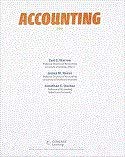
a.
Adjustments in financial statements Case Study
Case Summary:
Several years ago, the brother opened MA Repairs with small initial investments. Later for the expansion, the brother submitted a loan application to the bank and included the most recent financial statements, prepared by the part time book keeper. After reviewing the financial statements the loan officer enquired whether accrual basis of accounting was used to record revenues and expenses; then the brother responded that they maintained the books of accounts as per accrual basis of accounting. Further the loan officer enquired whether or not the accounts were adjusted prior to the preparation of the statements. To this the brother replied a no; since the accounts had not been adjusted.
To explain: The reasons for which loan officer suspected that the accounts had not been adjusted prior to the preparation of the statements.
b.
To indicate: The possible accounts that might need to be adjusted.
Want to see the full answer?
Check out a sample textbook solution
Chapter 3 Solutions
Custom Bundle: Accounting, Loose-leaf Version, 26th + Working Papers, Chapters 1-17, 26th Edition
- General Accountingarrow_forwardMorgan Corp. purchased $600,000 of 8% bonds of Thompson Inc. on January 1, 2022, paying $567,300. The bonds mature January 1, 2032; interest is payable each July 1 and January 1. The discount of $32,700 provides an effective yield of 9%. Morgan Corp. uses the effective-interest method and plans to hold these bonds to maturity. On July 1, 2022, Morgan Corp. should increase its Held-to-Maturity Debt Securities account for the Thompson Inc. bonds by: a. $3,270 b. $1,635 c. $1,529 d. $978arrow_forwardWhat is the cash paid to employees during the year on these financial accounting question?arrow_forward
 Financial AccountingAccountingISBN:9781337272124Author:Carl Warren, James M. Reeve, Jonathan DuchacPublisher:Cengage Learning
Financial AccountingAccountingISBN:9781337272124Author:Carl Warren, James M. Reeve, Jonathan DuchacPublisher:Cengage Learning Financial AccountingAccountingISBN:9781305088436Author:Carl Warren, Jim Reeve, Jonathan DuchacPublisher:Cengage Learning
Financial AccountingAccountingISBN:9781305088436Author:Carl Warren, Jim Reeve, Jonathan DuchacPublisher:Cengage Learning Individual Income TaxesAccountingISBN:9780357109731Author:HoffmanPublisher:CENGAGE LEARNING - CONSIGNMENT
Individual Income TaxesAccountingISBN:9780357109731Author:HoffmanPublisher:CENGAGE LEARNING - CONSIGNMENT





